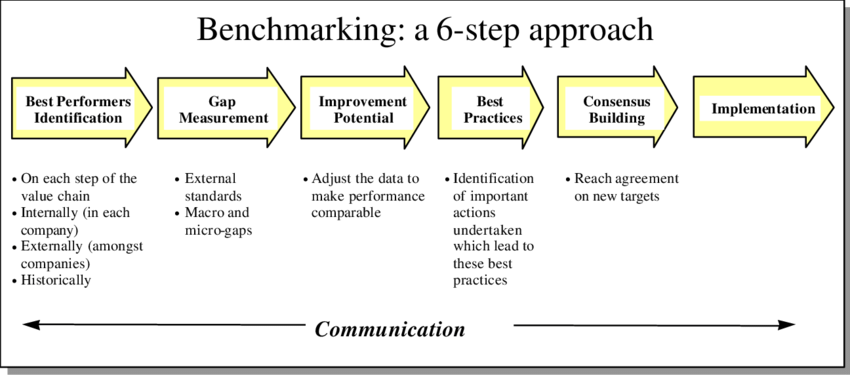Benchmarking is an approach of measuring products, services, and procedures against those of another company doing well in various aspects of its operation. It provides important insight that helps understand a company and compares it with similar companies even though they are in different business operations (Sekhar, 2010). Benchmarking has four distinct categories; the first is benchmarking based on performance which constitutes gathering and comparing measurable data and helps identify performance gaps. The subsequent category is benchmarking based on practice, which constitutes gathering and differentiating measurable facts on how a project is undertaken through technology, proceedings, and people. The third type of benchmarking is internal benchmarking, and it involves comparing performance and practice norms from distinct departments, programs, units, and merchandise within the organization. Lastly is external benchmarking, which compares the practices and metrics of a company with that of another company (Sekhar, 2010).
Steps Involved in Performance Evaluation Using Benchmarking
Selecting The Process
This step involves selecting a business to conduct the performance evaluation and gather support from both the middle and top management to acquire the necessary resources to support the spirit of participation needed and performance evaluation initiative (Sekhar, 2010). For the performance evaluation to be effective, it is significant to target specific areas and attain management support. Selecting a process means determining which process is important to the organization’s objectives and if performance evaluation is appropriate to determine the efficacy of the process.
Determine The Existing Performance
This step is important in determining the present conditions of the current business environment. In most cases, organizations embark on performance evaluation efforts because they want to achieve good results like other well-known companies (Benedetti et al., 2018). This is misguided because performance evaluation is organization and issue-specific. By not understanding the business environment, performance evaluation will fail to yield excellent results. Therefore, before undertaking performance evaluation, it is paramount for a company first to understand its performance.
Determining Where Performance Evaluation Should Be
The organization determines the areas where performance evaluation should be conducted and the departments or people involved. The top and middle management come together to determine the areas where performance evaluation should be conducted to avoid time wastage (Benedetti et al., 2018). Therefore, providing qualitative information before the performance evaluation will help produce impressive results.
Determining Performance Evaluation Gap
Determining where the gap is large is given a high priority so that it can be narrowed. In this step, you consider the organization’s performance challenges and analyze them logically (Benedetti et al., 2018). Performance evaluation gaps are useful and should be identified, organized, and categorized. Therefore, factors that cause an increase in the gap should be prioritized to help identify and narrow them down.
Designing an Action Plan
Some performance evaluation strategies are huge and can take a long period to complete. Therefore, a team must conduct the performance evaluation and obtain results within the set time frame (Benedetti et al., 2018). The performance evaluation should be goal-oriented to ensure that positive results get obtained. An action plan should indicate the procedures that will get applied to complete the performance evaluation.
Improve Continuously
This step is significant for an organization because it helps it maintain a competitive advantage and keep business activities effective and efficient. Using performance is one of the strategies that help determine whether a business is prepared to face challenges the emerge in the global economy (Popa et al., 2012).
Benefits of Benchmarking
Benchmarking helps a business keep enhancing its internal operations making the employees more productive each year. It also helps an organization determine what is working for it (Erdil & Erbıyık, 2019). Through performance evaluation and thorough analysis of previous business operations, the organization can recognize areas that need improvement. Benchmarking also helps a company reduce costs by improving its efficiency via reducing unnecessary expenses and reducing waste in its processes.







